#Loch Turret
Explore tagged Tumblr posts
Text
Wild Beauty & Open Waters: The Hebridean Sea Safari at Glenapp Castle

Some places are meant to be experienced, not just seen. The west coast of Scotland is one of them—a stretch of rugged beauty where mist clings to the cliffs, dolphins break the surface of the water, and islands feel untouched by time. And there’s no better way to explore this wild, untamed landscape than on Glenapp Castle’s Hebridean Sea Safari—a journey that feels as remote as it does extraordinary.
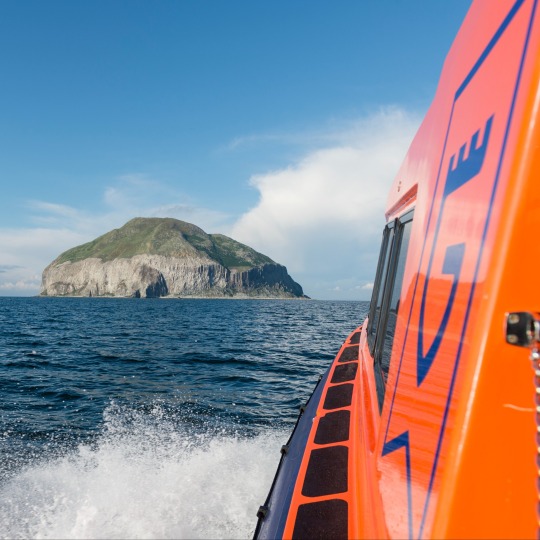
Beyond the Castle Walls: The Call of the Sea
Glenapp Castle itself is a world apart. A storybook estate tucked into the Ayrshire countryside, it’s all grand turrets, roaring fireplaces, and walled gardens straight out of a dream. But for those willing to venture beyond its ivy-covered walls, a different kind of adventure awaits—the kind where days are shaped by the rhythm of the tides and the pull of the horizon.
The Hebridean Sea Safari isn’t just an excursion; it’s an immersive escape into Scotland’s most remote and breathtaking corners. Guests board a private, fully crewed boat and set off into the Hebridean Sea, skimming across the waves toward the wild isles, where the only signs of life might be a distant lighthouse or a herd of red deer moving through the hills.

Wildlife, Wilderness & True Solitude
Out here, nature takes center stage. Pods of dolphins race alongside the boat, minke whales surface in the distance, and white-tailed eagles glide overhead. Seals bask on the rocky shores, barely blinking as the boat drifts past. This is a world where the wild feels close—where the silence is only broken by the call of seabirds and the splash of the waves.
And then there are the islands—some of the most remote in Scotland, each with its own story to tell. Guests can step ashore on Ailsa Craig, the volcanic island famous for its colony of puffins and curling stones carved from its granite. Further along, the Isle of Jura offers a landscape so untouched that George Orwell retreated here to write 1984. There are uninhabited isles with ancient ruins, beaches where the sand is white and unmarked, and lochs so still they mirror the sky.

A Journey Without a Script
What makes the Hebridean Sea Safari truly special is its flexibility—no two journeys are the same. Maybe the sea is calm, and the boat can press further into the Hebrides, anchoring for a gourmet picnic on an empty stretch of beach. Maybe the weather shifts, and the call of a crackling fire back at Glenapp feels more tempting.
For those who want to extend the adventure, there’s the option to stay overnight on one of the wild isles in a private luxury camp, where tents are anything but rustic—plush bedding, candlelit dinners, and the kind of silence that city dwellers have long forgotten.

A Different Kind of Escape
The Hebridean Sea Safari is a reminder of something rare—the kind of travel that strips away the noise and leaves only what matters: open skies, fresh sea air, and the quiet thrill of being somewhere that feels completely undiscovered.
For those who have always wanted to see Scotland beyond the postcard-perfect castles and whisky tastings, this is it. A journey into the wild, guided by the tides and the promise of something unforgettable.
#luxury#luxurytravel#thejajoftravel#travel#beautifuldestinations#travelandleisure#travelgram#beautifulhotels#traveling#scotland#glenappcastle#seasafari#Wildlife#adventuretravel#adventureawaits#travelguide#exploretheworld
0 notes
Text
The “smoothest scotch” Glenturret Triple Wood 2022 was crowned the best single malt Scotch with 99 points, at the recent IWSC, at an average retail price of $120.
Originally known as Thurot Distillery, Glenturret is nestled on the banks of the Turret River in the Scottish Highlands. Its history spans both illegal and legal production. The water source Loch Turret flows over the granite in the Grampian Mountains – producing exceptionally soft water that’s perfect for producing whisky.
https://bit.ly/3NsSm0H
#whisky #whiskey #scotch #spirits #maltwhiskysociety #whiskyinvesting #whiskygram #whiskytasting #whiskyporn #whiskylife #whiskylife #whiskylove #whiskycollector #scotchwhisky #scotchyscotchscotch #whiskeygram #sınglemaltwhiskey #whiskeylover #whiskeylife #whiskeyporn #whiskeylovers #singlemalt #singlemaltwhisky #singlemaltscotch
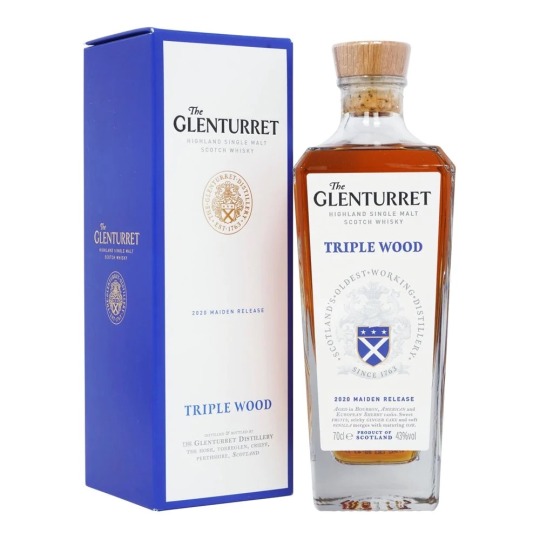

0 notes
Photo


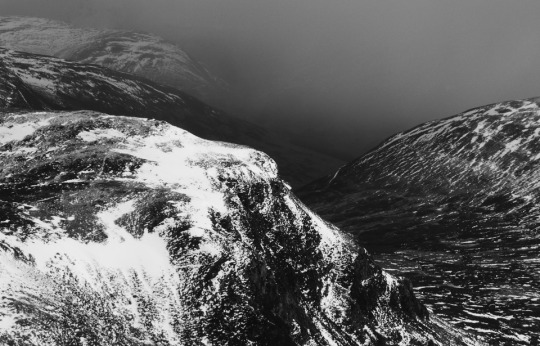
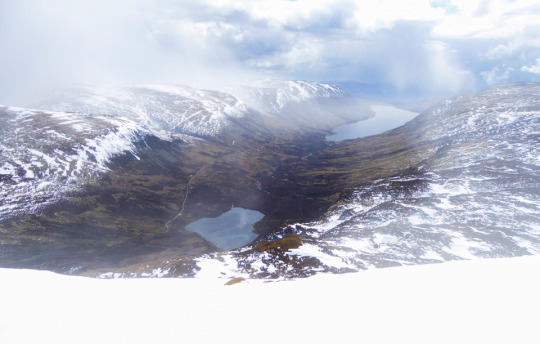



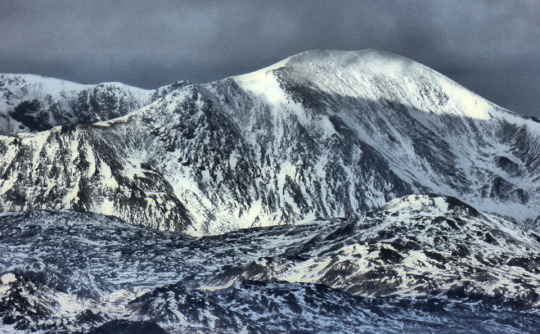
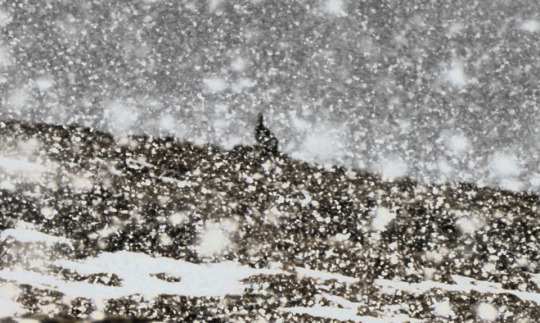

Ben Chonzie's boring, they said. Nothing to see here, they said. Talking out their a***s!
Great day out yesterday, making the most of the tail-end of winter before the humid wet soggy summer really takes hold. As soon as I parked up at the loch and opened the door...I was greeted by the sound of curlew, willow warblers, oystercatchers....and my first cuckoo! Very much felt like coming home :)
Plenty to see later on including ptarmigan, red grouse, mountain hare, red kite, peregrine, stonechat....and two ring ouzels!! And of course very heavy snow just at the right time, on the summit, resulting in poor visibility and a bit of nav practice. All with a beaming smiling face :)
#hillwalking#Perthshire#Ben Chonzie#Loch Turret#wildlife#munros#hills#mountains#weather#ptarmigan#red grouse#mountain hare#snow
10 notes
·
View notes
Video
Fort Augustus, Loch Ness by Danielle
#scotland#vacation#summer#Rabbie's#Rabbie's Tour#loch#ness#loch ness#fort augustus#castle#building#turrets#spires#blue#sky#grass#hills#mountains
64 notes
·
View notes
Photo
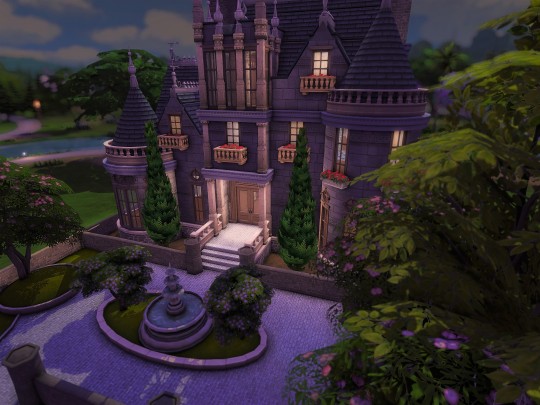
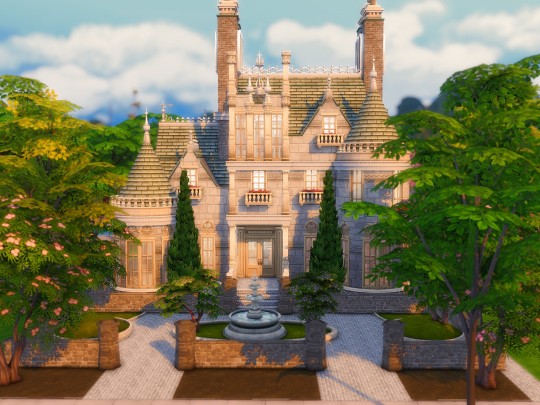

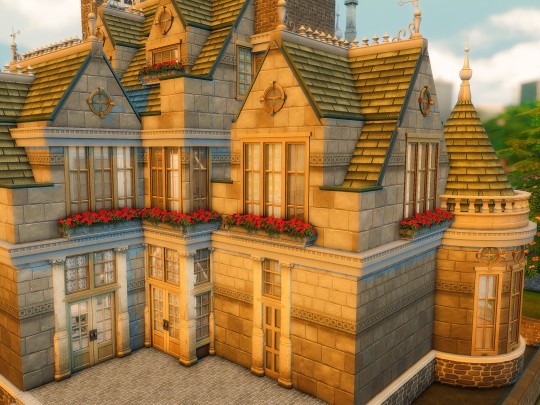


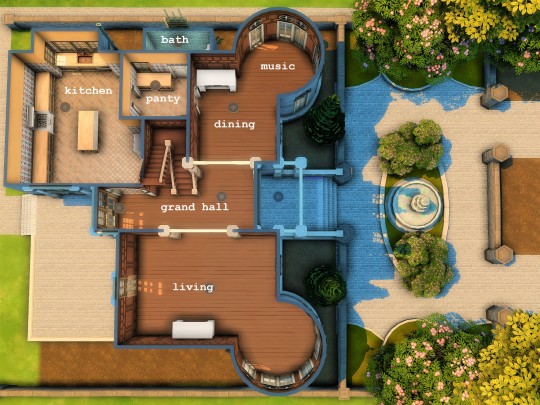


Halloween is just around the corner - time to start decorating!! #qubedesign brings you the Loch Lomond, a spooktacular mansion that's perfect for your planned holiday masacare. It features a grand floorplan with 4 bedrooms, 3.5 baths, nooks, crannies and turrets. #nocc #shell This #20x30 lot has #nocc, and is equipeed as a #shell to #decorate
Available in the gallery Origin ID BraverAdventures or by searching #qubedesign
Or, download ad-free at SFS: www.simfileshare.net/download/3499993/
You may alter, decorate or renovate and re-upload with credit to #qubedesign You may also download my new custom gshade setting 'Autumn Clear': www.simfileshare.net/download/3499326/
#QubeDesign#s4houses#S4 House#ts4 house#g-shade#gshade preset#maxis match#maxismatchccworld#NOCC#s4 build#ts4 build#halloween
759 notes
·
View notes
Photo

The crew of the “Memphis Belle” (L-R) Harold Loch (Top Turret), Cecil Scott (Ball Turret), Robert Hanson (Radio), Jim Vernis (Co-Pilot), Robert Morgan (Pilot), Chuck Leighton (Nav.), John Quinlan (Tail Gun), Tony Nastal (Rt Waist), Vince Evans (Bombardier), Bill Winchell (Lt Waist), 1943. [1024x683] Check this blog!
27 notes
·
View notes
Note
have 6, 7, 13, and 14 from the gw2 asks for rissia, if you’d like! :) @kerra-and-company
They're now a heart NPC/part of a string of quests. What does that involve? You'll find Rissia by the waypoint in Loch Jezt in Metrica Province, in the early part of leveling up a new asura. She's cheering up her little sister who's stuck inside back in Rata Sum, and she needs you to help out with "field research" so her sister can finish a project she's working on. There's a couple of turrets scattered around but they're damaged from the nearby hylek attacking them, as they're targeting the Durotl Grounds, so you have to fix and successfully reprogram them to not target that tribe. Once completed you get a note from Rissia (with a postscript from Qirri!) thanking you for your hard work and saying that the Durotl hyleks appreciate it as well. Do they have any skills or abilities that their class wouldn't normally have/just go about their class differently in some kind of way? After Elona, Rissia is able to pull energy from undead creatures if she really focuses. But since it requires a lot of attention and it draws a lot of her own willpower to do so, she does not do it very often. What is the worst/funniest/dumbest article that could be written about them in Tyria's trashiest gossip mag? Well, there's always the ongoing saga of "Vezz is Actually the Worst and is Contributing to Rissia's Ruin", thanks to Snargle's romance novels... Biggest misconception about them? That she's standoffish and cruel. She's actually kind and quite silly at times, known for her squeaky snorts when she starts laughing hard enough. She certainly comes across as cruel when she's in the middle of fighting, and was standoffish when she was acting Commander because she was often deep in thought about the multiple issues she had to manage. But she is never actively those two things.
6 notes
·
View notes
Text

🏴 Balintore Castle is a Victorian Category A listed building in Scotland.
The castle occupies an elevated site in moorland above Balintore village, a few miles north of the Loch of Lintrathen, near Kirriemuir, Angus. A tower house named Balintor existed on the site in the late 16th century, according to Timothy Pont's maps.
It was designed in 1859 by the architect William Burn A typical example of the Scottish Baronial style, it features an abundance of turreted towers and gables, and a gone[clarification needed] oriel window. The main tower is topped by a balustraded viewing platform similar to that of Buchanan Castle.
The centrepiece of the interior is the great hall, and there is also a gallery, bedrooms, dinner service room, women servant's sitting room, brushing room, beer cellar, lumber room, butler's pantry, dining room, and a library.
Balintore Castle was commissioned as a sporting lodge by David Lyon, MP, who had inherited a fortune made by his family through investments in the East India Company.[2] Latterly the castle was used only during the shooting season.
In the 1960s it was decided not to repair the extensive dry rot, and it was abandoned. The castle then stood empty until 2007, during which time its condition deteriorated to point of endangering the structure. Balintore Castle has been listed in the Buildings at Risk Register for Scotland since it started in 1990. Angus Council used its compulsory purchase powers to buy it from its absentee Far Eastern owners, and it is now in the hands of a Scotsman who is restoring it and residing there. 👉👉👉 Castles of the world — em Balintore Castle
3 notes
·
View notes
Text
Ronnie Bell Following
B-17 Flying Fortress "Memphis Belle"
ENGLAND: AIRPLANES, MEMPHIS BELLE
The crew of the Boeing B-17 Flying Fortress "Memphis Belle" is pictured at an airbase in England after completing 25 missions over enemy territory. They are, left to right: T/Sgt. Harold P. Loch, Green Bay, Wisc., top turret gunner; S/Sgt. Cecil H. Scott of Altoona, Penn., ball turret gunner; T/Sgt. Robert J, Hanson of Wall Wall Washington, radio operator; Capt. James A. Verinis of New Haven, Connecticut, co-pilot; Capt. Robert K. Morgan of Ashville, North Carolina, pilot; Capt. Charles B. Leighton of Lansing, Michigan, navigator; S/Sgt. John P, Quinlan of Yonkers, New York, tail gunner; S/Sgt. Casimer A. Nastal of Detroit, Michigan, waist gunner; Capt. Vincent B. Evans of Henderson, Texas, bombardier and S/Sgc. Clarence E. Wichell of Oak Park, Illinois, waist gunner. 7 June 1943
Via Flickr
9 notes
·
View notes
Photo

Glen Turret> Crieff is a Scottish Market town 25miles or so from the cottage. Venture up to Loch Turret for its trails on foot or bike and drop into the stunning Glenturret Distillery. #visitscotland #scotlandbytheroadside #scotland_lover #hiking #hike #trails #walkingholiday #perthscotland #swimscotland #hillwalking #hillwalkingscotland #getoutdoors #holidaycottagescotland #staycationscotland #gravelbike #gravelbiking #biking #cyclinglife #whiskylover #whisky (at Loch Turret Reservoir) https://www.instagram.com/p/CT4_h7Dq5ak/?utm_medium=tumblr
#visitscotland#scotlandbytheroadside#scotland_lover#hiking#hike#trails#walkingholiday#perthscotland#swimscotland#hillwalking#hillwalkingscotland#getoutdoors#holidaycottagescotland#staycationscotland#gravelbike#gravelbiking#biking#cyclinglife#whiskylover#whisky
1 note
·
View note
Text
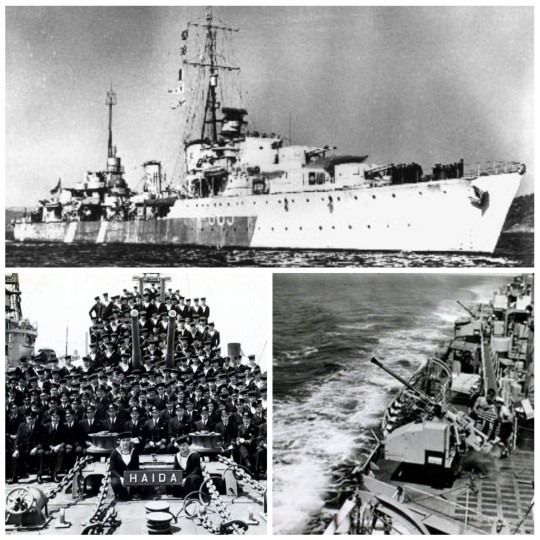
• HMCS Haida
HMCS Haida is a Tribal-class destroyer that served in the Royal Canadian Navy (RCN) from 1943 to 1963, participating in World War II and the Korean War. She was named for the Haida people.
The Tribals were designed to fight heavily armed destroyers of other navies, such as the Japanese Fubuki class. Canada chose the design based on its armament, with the size and power of the Tribal class allowing them to act more like small cruisers than as fleet destroyers. Haida was among the first batch of Tribal-class destroyers ordered by the RCN in 1940–1941. They were ordered with modified ventilation and heating systems for North Atlantic winter service. Haida's design was modified after deficiencies were noted in the lead ship of the Canadian Tribals, HMCS Iroquois. Haida, as one of the British-built Tribal-class destroyers, was 335 feet 6 inches (102.26 m) long between perpendiculars and 377 feet (115 m) long overall with a beam of 36 feet 6 inches (11.13 m) and a draught of 13 feet (4.0 m). As built, the destroyer displaced 1,927 long tons (1,958 t) standard and 2,745 long tons (2,789 t) at deep load. Haida had a complement of 14 officers and 245 ratings. As built, Haida was fitted with six quick-firing 4.7-inch (119 mm) Mk XII guns placed in three twin turrets. For secondary anti-aircraft armament, the destroyer was equipped with four single-mounted 2-pounder "pom-pom" guns. The vessel was also fitted with four 21-inch (533 mm) torpedo tubes for Mk IX torpedoes.
Haida's keel was laid down by Vickers-Armstrongs, Ltd. at their shipyard in Newcastle-upon-Tyne on September 29th, 1941. The destroyer was launched on August 25th, 1942 and commissioned into RCN service on August 30th, 1943. She underwent workups under her first commanding officer, H.G. DeWolf before reporting to the British Home Fleet at Scapa Flow in October 1943. After commissioning Haida was assigned to the Royal Navy's Home Fleet. On November 28th Haida was among the destroyer escort for the Russian convoy RA 54B, protecting it until it reached Loch Ewe on December 9th without loss. The convoy JW 55B sailed from Loch Ewe for Russia on December 20th. Haida was a member of its ocean escort. The German battleship Scharnhorst was deployed to intercept the convoy. While the cruisers escorting the convoy kept the German vessel at bay, Haida and the other escorting destroyers shepherded the convoy away from danger until the German battleship was sunk by a British force. Haida joined the escort of RA 55B on the return journey to the UK which sailed from Kola Inlet on December 31st and arrived on January 8th, 1944. On January 10th, 1944, she was reassigned to the 10th Destroyer Flotilla at Plymouth and took part in the Operation Tunnel and Operation Hostile sweeps in the Bay of Biscay and along the French coast of the English Channel.
By April, Haida had sailed on nineteen of the Operation Tunnel/Hostile missions. Haida continued the Operation Hostile sorties in company of sister ship Huron during the weeks leading up to Operation Overlord. The 10th Destroyer Flotilla were part of the covering force for surface attacks at the western entrance of the English Channel during the invasion of Normandy. On June 9th, Haida was part of Task Force 26 which engaged the German 8th Destroyer Flotilla, comprising Z32, Z24, ZH1 and T24 northwest of the Île de Bas. Following the fall of Cherboug, the German E-boats were transferred to Le Havre, freeing up the 10th Flotilla. The flotilla was then given the dual role of covering Allied motor torpedo boat flotillas and search and sink missions against German shipping along the French coast. On June 24th, while on patrol in the English Channel off Land's End, investigated a Liberator bomber dropping depth charges on a target. Haida and the British destroyer Eskimo began their own depth charge attacks after being informed that a submarine had been spotted. After several attacks, the submarine surfaced and attempted to run. Haida and Eskimo began to fire with all their guns and sank U-971. Haida rescued six survivors of the sunken submarine. On August 5th, Haida was part of a force engaged in an Operation Kinetic sweep. The force attacked a German convoy north of the Île de Yeu and sank the minesweepers M 263 and M 486, the patrol boat V 414 and the coastal launch Otto. During the battle a shell exploded in one of Haida's turrets and started a fire, killing two and injuring eight, knocking the turret out of action. Staying in the line of battle, the destroyers were engaged by shore batteries when they attempted to take on a second convoy and were forced to withdraw without doing much damage to the German merchant vessels.
Haida departed Western Europe on September 22nd for Halifax, Nova Scotia, arriving on September 29th. The destroyer returned to Scapa Flow in mid-January 1945 after refitting to receive new radar. In March Haida escorted aircraft carriers in minelaying operations off Granesund, Norway and assisted in attacks on shipping off Trondheim from March 24th-28th. On April 7th, Haida escorted seven anti-submarine warfare vessels from Greenock, Scotland destined for Soviet use at Vaenga, on the Kola Inlet. Haida experienced one of the last RCN engagements of the Second World War when she escorted convoy RA 66 from Vaenga from April 29th to May 2nd. The convoy was attacked in transit and Haida and Huron received near-misses from torpedoes fired by U-boats. In the skirmish, two U-boats were sunk, along with the frigate Goodall, and the convoy escaped in a snowstorm. Haida and Huron returned to Scapa Flow on 6 May and were assigned to relief operations at Trondheimsfjord, Norway on May 17th. Haida, along with Huron and Iroquois, left for Halifax in June to refit as part of Canada's contribution to Operation Downfall. They arrived on June 10th and Haida started a tropicalization refit but it was suspended after the surrender of Japan later that summer.
After the war, Haida was in inactive reserve for approximately one year but was prepared for reactivation in 1947 and underwent a refit for updated armament and sensors. This involved replacing the main armament, with the 4.7-inch guns removed and two twin Mk XVI 4-inch gun mounts installed forward and a twin 3-inch (76 mm)/50 calibre gun mount installed aft. Haida and her sister ship HMCS Nootka participated in exercises between the RCN's Atlantic Fleet and the United States Navy and Royal Navy over the next several years and were the first RCN ships to penetrate Hudson Bay in Fall 1948. Haida was involved in assisting during the grounding of the aircraft carrier HMCS Magnificent off Port Mouton, Nova Scotia on June 4th, 1949. In November 1949, Haida rescued the 18 members of the crew of a United States Air Force B-29 bomber that crashed in the Atlantic Ocean. The opening of the Korean War on June 25th, 1950 saw Haida once again activated for war duty. She was converted to a destroyer escort and began refit in July 1950 which saw various new armaments and sensors and communications systems. Following the Korean operations, Haida embarked on Cold War anti-submarine warfare duties with other NATO units in the North Atlantic and West Indies.
In 2002, at the urging of Hamilton, Ontario MP Sheila Copps, Parks Canada purchased Haida from the provincial government and towed her (with great difficulty) from her Ontario Place dock to a shipyard at Port Weller for a $5 million refit to her hull. She was taken to a new home on the Hamilton waterfront and arrived to an 11-gun salute from 31 Royal Canadian Sea Cadet Corps Lion and her 12-pounder naval field gun on August 30th, 2003, the 60th anniversary of her commissioning into the RCN.
#ww2#world war 2#world war ii#second world war#royal canadian navy#canadian history#history#british history#long post#british commonwealth#wwii
28 notes
·
View notes
Photo

Evening light at Robin's Dam (Perthshire, Scotland) by Katherine Fotheringham
#evening#light#perthshire#perth#rohallion#scotland#Robin's dam#loch#nettles#turret#house#castle#trees#woods#sun#fairy tale
69 notes
·
View notes
Video
youtube
Bitesize Ben - Take time to chat with landowners
Sometimes it feels like there's war out there between those that work the land and those that use it for recreation. There are pressure points undoubtedly, but for the most part the two manage to coexist without too much drama. That said, this does depend on being able to foster mutual respect and understanding......so the next time you pass a landowner, farmer, ghillie or stalker, take the time to say hello and be willing to stop and chat for a wee while. You never know what you might (both) find out!
2 notes
·
View notes
Photo

Castle of the Day, Dunvegan, Isle of Skye.
Built on a rock in an idyllic loch side setting on the Isle of Skye, Dunvegan is the oldest continuously inhabited castle in Scotland and has been the ancestral home of the Chiefs of Clan MacLeod for 800 years.

Here's an artist's impression from the guide book showing Dunvegan in its original 13th century incarnation as a simple enclosure comprising a curtain wall entered from the seaward (west) side by a sea gate and containing unpretentious thatched domestic buildings within.

The picture above is the earliest known contemporary picture of the castle. It was drawn by the antiquarian (and acquaintance of Robert Burns), Captain Francis Grose in 1790. Viewed from the landward (east) side this time, the buildings within the curtain wall are more substantial but still show little sign of "gentrification". The tower on the right appears derelict and is thought to have been built some time in the late 14th century.

The next picture is by the artist William Daniell in 1819. By now, Dunvegan is well into its transformation from castle to stately home with the major change being the addition of the turretted landward entrance porch and bridge. The main tower (right) seems to be back in use with an ogee roof on its northern extension. Note also that the chimney in the middle of the east front which is also conspicuous in the Grose drawing:-

And as it is today.
The Clan MacLeod traces it’s origins back to Leod, a son of Olave the Black, the self styled King of the Isles who had fled Norway around the year 1230 after making too may enemies with his war mongering ways. He had cleverly retained vast lands in the Western Isles, but would remain a troublesome with various island clans. It was he who built the first castle as seen in the first drawing.
Two of Leod's early descendants, Tormod and Torquil, became the heads of the two great clans MacLeod. From Siol Tormod are descended the MacLeods of Dunvegan (Skye), Harris and Glenelg.
A history of these and other Highland Clans reveals their diverse chapters of fierce, bitter and bloody rivalries with their enemies. There are examples of noble and ignoble leadership; greatness and self destruction. Doyens with political acumen and recklessness, this was prevalent in all branches of the MacLeod Clan and it wasn’t until the 16th century that things began to calm down a wee bit. When the MacLeods of Harris at Dunvegan Castle, were pledged to ‘good rule and quietness in the Islands’ That’s not so say they were without incident, most notable were there troubles with the MacDonalds and Frasers.
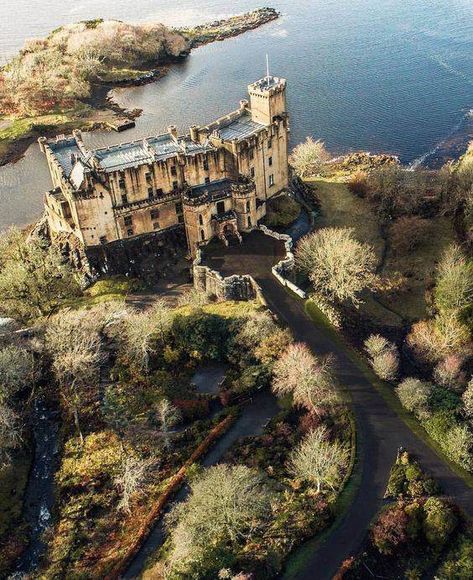
MacLeod did not participate in the Jacobite uprisings of Prince Charlie because of prior heavy losses, however, MacLeods of Raasay sided with the Jacobites and paid dearly for that allegiance.

As you would expect, with all the gentrification of the castle that happened during the 19th century Dunvegan is more of a stately home nowadays, as seen in the pic of the hall and library.

As I’ve mentioned before I am no great fan of the stately home type properties, however I do recommend a visit to Dunvegan Castle, firstly it is the home to the famous Fairy Flag, Am Bratach Sith in Gaelic. There are many legends surrounding this piece of silk, which is now reduced in size (from pieces being removed and kept for luck) and somewhat threadbare. One is that it was given to one of the chiefs by his fairy wife at their parting. This is said to have taken place at the Fairy Bridge, three miles to the north east, at a meeting of rivers and roads. The chief had married his wife thinking she was a mortal woman, but she was only permitted to stay with him for 20 years before returning to Fairyland.

The flag, however, originates from the Middle East, and it has been dated between 400 and 700 AD, predating the castle by hundreds of years. The flag is believed to give victory to the clan whenever unfurled, and reputedly did so at the battles of Glendale in 1490 and Trumpan in 1580. It has been examined numerous times in the last two centuries, and its condition has somewhat deteriorated. It is ripped and tattered, and is considered to be extremely fragile. The flag is covered in small red "elf dots". In the early part of the 19th century, the flag was also marked with small crosses, but these have since disappeared.
The Fairy Flag was also believed to make the marriage of the MacLeods fruitful, when draped on the wedding bed, and to charm the herrings out of Dunvegan Loch when unfurled. Belief in its power was such that during World War II pilots from the clan carried a picture of the flag as a talisman.

Other interesting items at Dunvegan include a drinking horn called Rory Mor’s Horn, Clan custom is that each successive chief is to drink a full measure of the horn in claret to prove his manhood. The artwork on the horn has been dated to the 16th century, and by some as far back as the 10th century.

And finally we have Dunvegan Cup a wooden ceremonial cup elaborately decorated with silver it is a unique ‘mazer' dating back to the Middle Ages. one of the stories state that it was gifted by the O'Neils of Ulster as a token of thanks to one of the clan's most celebrated Chiefs, Sir Rory Mor, for his support of their cause against the armies of Queen Elizabeth I of England in 1596. Everywhere except the rim, the silver is very thin, and in consequence has suffered a great deal of damage over the years.
Walter Scott gives this cup a mention in his poem “Lord of The Isles.....
'Fill me the mighty cup!' he said, 'Erst own'd by royal Somerled: Fill it, till on the studded brim In burning gold the bubbles swim, And every gem of varied shine Glow doubly bright in rosy wine! To you, brave Lord, and brother mine, Of Lorn, this pledge I drink - The Union of Our House with thine, By this fair bridal-link!'-
There are many different tales relating to the cup, too many to mention, read more on it here at wiki https://en.wikipedia.org/wiki/Dunvegan_Cup
118 notes
·
View notes
Text
Hensol House


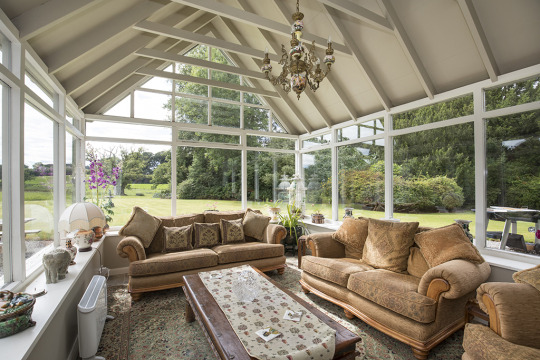
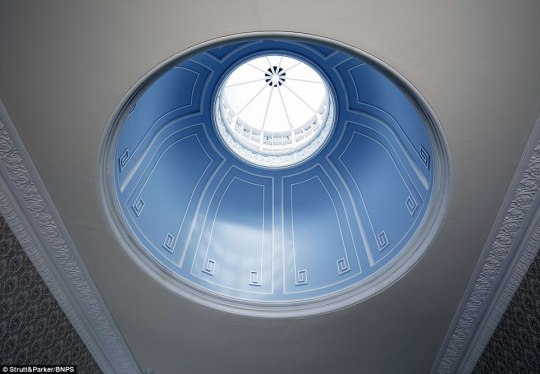
Hensol House is located in Kirkcudbrightshire in Galloway, Scotland. Hensol House dates back to the early 15thcentury and was added to by several owners throughout its history. The Jenkins family owned it from 1419-1721. The castle also passed through the members of the Cunninghame Clan from the 19thto the 21stcenturies. Big Game hunter, Richard Cunninghame lived in the home until his death in 1925. Richard went on safari with the late President Roosevelt and saved him from an angry rhino. The Gothic and Tudor designed country home sits on the River Dee and Loch Ken at the end of a mile-long private drive. Built with granite and slate, the three-story house has square turrets and slit windows with diamond-pane glazing. The gardens were designed to encircle the house, and include yew trees, a sundial, a walled garden, and graveled areas. The 632-acre property has a tennis court, a summerhouse, cottages, a farmhouse, a boathouse, various outbuildings, and a Gothic style 1822 lodge located near the entrance gate. Hensol House has ten bedrooms, two family bathrooms, a sitting room, a conservatory, four reception rooms, a drawing room, a library, a wine cellar, and a billiards room. The interior boasts high ceilings, a Jacobean carved mantelpiece, a cantilevered staircase with a mezzanine landing, a cupola, large bay windows, and vaulted ceilings. The castle is currently on the market for 5.5 million.
3 notes
·
View notes
Text
Five Vignettes about Asta in Stormhaven - Bathhouse
In which, among other things, we learn a little about Stormhaven bathhouse culture.
~~~
Ari and all her many lodgers lived in a strange old house in the Barracks District, up against the inner wall across the northern end of the ridge at the heart of the city. It was a higgledy-piggledy building, tall and with a wide footprint but such a maze of staircases and landings on the inside that it was very difficult to state how many storeys it actually had or exactly how old it really was; any number of builders and architects seemed to have had a go at it over the years, adding on a room here or a turret there without much consideration for things like maintaining a coherent floor plan.
Fayn gave the bell-pull by the door a yank and stood back, folding her arms. Ari’s voice shouted something that may have been “Be right with you!” from deep inside the warren, but it was almost a whole minute until the door opened.
“Ah, good, you’re here!” said Ari, clapping her hands together. “I wondered if you’d be along – come in and sit down while everyone else gets ready.”
“Why wouldn’t I be along?” asked Fayn as Ari waved her through to the nearest of three living rooms to the front door. She picked a squashy couch and sat down, swinging her bag off her shoulder. “It’s Stormsday, after all – the College bathhouse is fine, but you do have to carefully time when you use it if you don’t want to dodge apprentices.”
“Well, you’re still in your honeymoon period and all that,” said Ari with a wave of her hand. “Wasn’t sure if you’d want to leave your new husband behind.”
Fayn laughed. “I love Wygar very much, but it’s important to spend some time apart as well.”
Ari grinned, pulled her hair into its customary voluminous ponytail, and leant back out of the living room door. “FIVE MINUTE WARNING, LADIES!” she bellowed into the depths of the house, to a chorus of replies in various states of volume and clarity. “They’ll be down soon,” she said, and flopped down on the couch next to Fayn.
“Have you taken in any new strays since the last time I visited?” asked Fayn.
“I have, since you ask,” said Ari. “Pirate – have you met him? He’s a sailor with Curlew, one of the trading ships – pointed her in my direction. Asta, her name is. Kiraani woman – an escaped slave.” Ari glanced over at the door and lowered her voice. “She doesn’t really talk about what happened to her, but she’s a skittish little thing. I think she had a rough time of it. So… go gently with her, eh?”
“You don’t need to warn me about it,” Fayn murmured.
“No, I suppose I don’t.”
The others drifted downstairs one by one until they had gathered in the hall. Rose, the longest-standing lodger and Ari’s on-and-off partner, poked her head around the living room door. “Tasha isn’t – oh, hi, Fayn – Tasha says she isn’t feeling too well, so she’s staying behind,” she said, “but the rest of us are ready to go.”
“Then go we shall!” said Ari. She picked up her own rolled-up towel from one of the armchairs and led the way out into the street. “Fayn, can you grab the key off the hook and lock up once everyone’s out?”
More by chance than intent, Fayn found herself walking alongside the newcomer once the door had been locked and everyone set off down the street. She was only a couple of inches shorter than Fayn – squarely average rather than little – and she was a strikingly pretty woman, with delicate features, warm chestnut-brown eyes, and straight, glossy black hair that fell slightly past her waist. ‘Skittish’, however, was accurate: she was careful to stay close to the group, her expression reminiscent of a rabbit in front of a fox, but she made no attempt to join any of the conversation. She looked to be about Fayn’s age, but her bearing made her seem younger somehow, and Fayn found herself struck by an unexpected wave of protectiveness.
She lightly cleared her throat. “Asta, is it?” she asked, trying for as gentle a tone as possible. “I’m Fayn. I work with Ari at the College.”
Asta gave her a polite but distinctly nervous smile, nodded, and said nothing.
“So… How long have you been staying with Ari?”
That, at least, got an answer. “Almost a week, now.” The Imperial City was clear in her accent, but a hint of the Sea Loch Country had crept into her vowels. “Are these bathhouse outings a regular thing?”
“Every week,” Fayn confirmed. “I don’t always tag along, however.” She smiled. “It took me a while to work up the courage to tag along the first time.”
“Did – did you stay with her too?”
“Me? No, I’ve been living up at the College. Long story,” she added at Asta’s puzzled frown. “But you could say she took me under her wing when I got here. She was the first friend I made here by myself, without being introduced by someone else.”
Asta glanced over to the front of the group, where Ari was walking with one arm around Rose’s waist. “I get the impression she does that a lot. Take people under her wing.”
“Yes, and she doesn’t take that protection back, even if you’re past needing it.” Fayn smiled fondly, fidgeting with her wedding ring on its chain around her neck. “My husband told me that she gave him a very stern talking-to when she first learned he had proposed.”
“Wh-where did you live before? If you don’t mind my asking.”
“The Darkwald.”
“Oh, in the village – what’s it called? Halfway.”
“Nnno, out in the forest.”
“Oh.” Asta frowned again, then shrugged. “I didn’t realise anybody lived out there. Any more,” she added sadly.
Fayn appraised her in silence for a couple of seconds, then held out one hand. Asta looked at in confusion. The confusion was quickly replaced by naked astonishment as her nails sharpened into claws, her palm and fingerprints toughened into pads, and the fine hairs lengthened into a coating of white fur. Asta slowly looked up at Fayn’s face, wide-eyed, as she let her hand return to its usual human appearance.
“Blessed Kura,” said Asta, almost whispering. “You’re… Falkari.”
Fayn nodded.
“I… I’m so sorry. For what happened. For what the Empire did.”
“You would have been a child when it happened,” said Fayn after briefly wondering how to respond to that. “It was nothing to do with you. But thank you for saying it all the same.”
That nervous little smile again. Any further questions were postponed when they reached the bathhouse, and Ari led everyone up the steps and through the big double doors into the foyer.
The Soldier Road Bathhouse was neither the biggest nor the most luxurious in the city – that honour belonged to the Palace Avenue Baths in Craglee – but it still held its own appeal. A plaque at the door politely explained the baths’ timetable – Moonsday and Stormsday were for women only, Wolfsday and Oaksday for men, and Ravensday and weekends were for mixed bathing – while inside, behind a front desk of polished granite and through the changing rooms, the main pool stretched out beneath a frosted-glass roof. Unlike some of Stormhaven’s public baths, it was intended for actual bathing rather than exercise, and so the main pool was a uniform depth all the way along and was heated a little too warm for swimming, with small tiled islands here and there to provide more places to sit than just around the sides. Lockers in the changing rooms provided a safe place to leave clothes and valuables, while each flight of steps down into the pool was flanked by a set of shelves on which to leave the towels and dressing gowns most people used to stay discreet until the cloudy, steaming water provided its own modesty. Not everyone bothered.
Asta, armed with a bar of soap on a string, was the last into the pool. She sat on the edge for a while with just her feet in the pool, staring down into the water, until she finally squared her shoulders, shed her towel onto the nearest shelf, and let herself fall forwards with a splash.
Ari completely failed to stifle a gasp when she resurfaced, and from the way Asta’s shoulders slumped again, she had noticed. Fayn caught Ari’s elbow and held a quick conversation through facial expressions alone.
Don’t stare!
Her back, Fayn! The poor girl…
I know. I know.
Yes, it’s not polite to stare – but do we just ignore them? Should we ask what happened?
Isn’t it obvious what happened?
Asta’s entire back from her shoulders down to her waist was covered in scars, and not the flat, silvery kind left by all the scrapes and scratches Fayn had gathered over her years in the forest, but a lattice of raised, uneven knots and ridges like strands of rope beneath her skin. ‘Whipping’ seemed an inadequate word for what had been done to her, and whoever was responsible had clearly had an obscene amount of experience at it. Though the wounds had healed, the new skin was still tinged with pink; the scars were far too recent to have properly added to her image of herself, and probably gave her a new shock each time she caught a glimpse of them in the mirror. She sighed and moved through the pool in a half-crouch, letting the water reach her shoulders, before she sat down on one of the island benches with her back to the tiles and drew her knees up to her chest, looking down at the water. Ari was far from the only person to have noticed – women all over the pool were trying very hard not to stare – and the look on Asta’s face was no longer simple nerves; it was shame.
Fayn frowned more from that realisation than from the scars themselves, and exchanged a glance with Ari, who just shrugged helplessly. Fayn sighed and, after a moment’s thought, waded over to Asta’s bench. She didn’t speak to her, try to lay a comforting arm around her – probably a bad move from a near-stranger anyway – or even really look at her; she just sat down on Asta’s right, angling her shoulders so that the three huge, ragged claw-marks scarring the back of the left were in plain sight. Out of the corner of her eye, she saw Asta notice, open her mouth briefly, then close it again and look away.
“How-” Asta began, and cut herself off. “None of my business,” she mumbled.
“It’s all right,” said Fayn. “You can ask.”
“How… how did that happen?” Asta nodded towards the claw marks.
“I tried to fight a bear.”
Asta let out a small giggle. “No, really.” Fayn just looked at her. “…No, really? Did you win?”
Fayn laughed. “Define ‘win’. The bear made off with my dinner, but I lived. That was its own victory.”
“Hmm.” From the suddenly thoughtful way Asta looked out across the pool, she had immediately caught what Fayn was trying to do. “Does it never bother you? When you catch people staring?”
“Sometimes. I hate being stared at. But if people are staring, that’s their problem, not mine – all my scars mean in themselves are that I was strong enough to survive what gave them to me, and that’s never something to be ashamed of.”
“…Huh.”
1 note
·
View note
